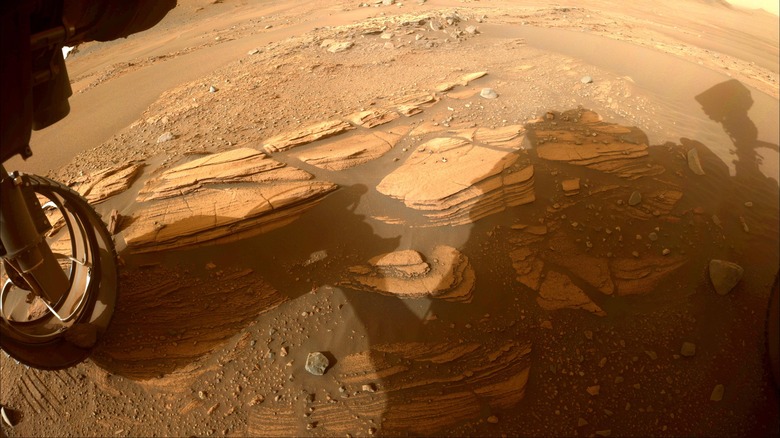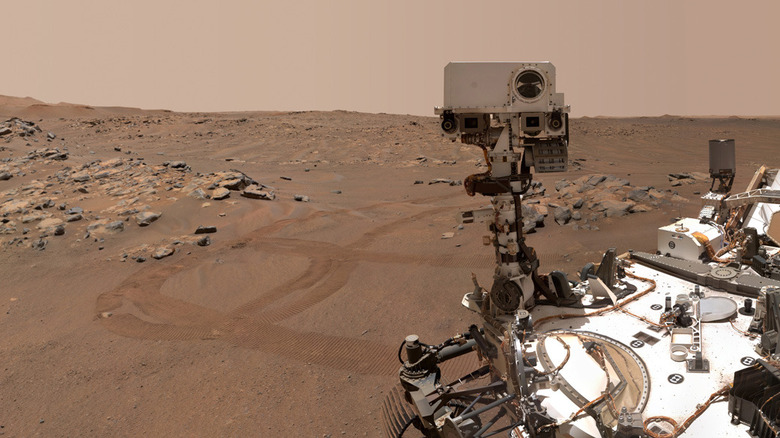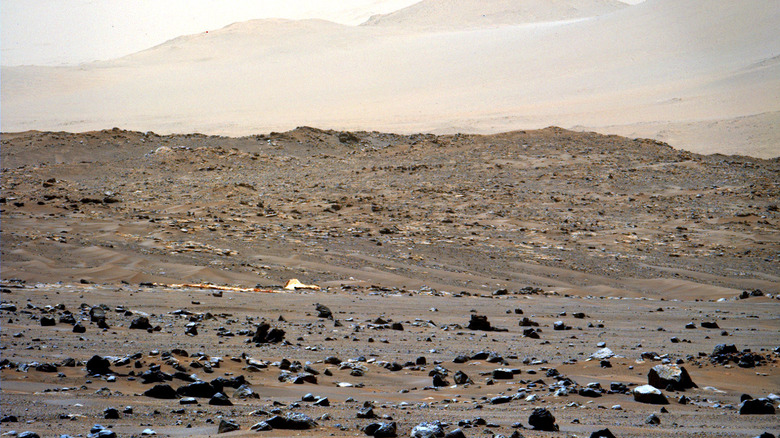NASA's Mars Rover Found Organic Matter That Has Experts Fascinated
If you were to visit Mars today you'd find a dry desert, where across most of the planet there is no water on the surface and only some ice around the polar regions. But millions of years ago, Mars looked very different. It once had plentiful liquid water on its surface forming rivers and lakes, and it may even have looked rather like Earth. That's why scientists think that although there's almost certainly nothing living on Mars right now, there might once have been microbial life there.
Looking for evidence of that potential microbial life is one of the main aims of NASA's Perseverance rover, and scientists studying the samples collected so far by the rover have recently made an exciting discovery in the Jezero Crater where the rover is exploring.
The rover has collected 12 samples in total, with four coming from a particularly intriguing location in Jezero called the river delta as part of the rover's second science campaign. This is an area that used to be a delta where sediment was deposited by a river — an ideal location for searching for evidence of life.
"We picked the Jezero Crater for Perseverance to explore because we thought it had the best chance of providing scientifically excellent samples — and now we know we sent the rover to the right location," the NASA associate administrator for science, Thomas Zurbuchen, explained. "These first two science campaigns have yielded an amazing diversity of samples to bring back to Earth by the Mars Sample Return campaign."
What Perseverance found in the delta
The samples that the rover has collected from the delta are interesting because they are of a different type from previous samples. Most of the samples the rover collected in its first science campaign, which covered the floor of the Jezero crater, were igneous rocks that are formed by cooling lava. The recent samples collected from the delta, by contrast, are sedimentary rocks that are formed by layers of sediment laid down in the presence of water.
"The delta, with its diverse sedimentary rocks, contrasts beautifully with the igneous rocks — formed from crystallization of magma — discovered on the crater floor," Perseverance project scientist Ken Farley explained. "This juxtaposition provides us with a rich understanding of the geologic history after the crater formed and a diverse sample suite. For example, we found a sandstone that carries grains and rock fragments created far from Jezero Crater — and a mudstone that includes intriguing organic compounds."
Those organic compounds are a major discovery. The Curiosity rover has also found organic molecules in its exploration of Mars's Gale Crater, but the Perseverance discovery is particularly notable because the organic compounds were found in the delta area which could once have been hospitable to life.
The importance of organic molecules
Finding organic molecules is exciting, but it isn't the same as finding life. These molecules, made up of carbon often along with hydrogen or oxygen, can be described as the building blocks of life. They can be created by processes unrelated to life, such as geological processes, so finding them isn't proof that life existed there. But they indicated that life could potentially have developed there, as the essential ingredients were present.
But to learn more, we'll need to get samples from Mars back to Earth to study them in depth. That's why Perseverance is putting samples into tubes and leaving them on the martian surface so that they can later be collected by another rover and delivered back to Earth for study.


